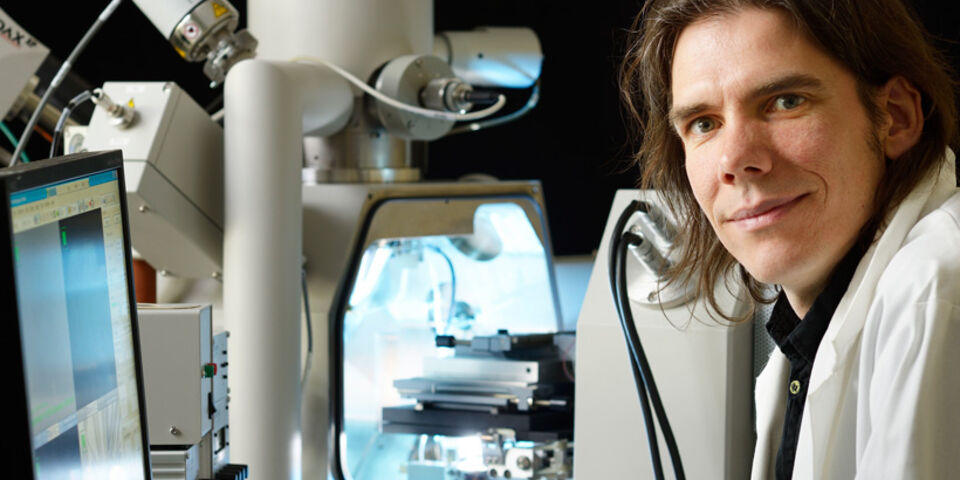Second skin
State-of-the-art electronics, integrated in stretching material that can be used as a sort of second skin to cover the heart, the brain, and nerves, or even as an artificial retina. Dr.ir. Johan Hoefnagels hopes the invention will allow for all kinds of futuristic medical uses. Last month he was awarded a Vidi Grant to make his dream come true.
The developments in the semiconductor industry result in ever smaller, faster, and more advanced electronics. The disadvantage of these silicon chips is that they’re fitted on hard, hardly bendable PCBs (printed circuit boards). It’s one of the reasons the industry is working on flexible, plastic electronics – a development that should pave the way for rollable displays. However, flexible does not necessarily mean stretchable, says Johan Hoefnagels. “Take this sheet of paper. I have no trouble rolling it, but I can’t bend it more ways than one at the same time. Paper is flexible, but not stretchable like rubber.” Only stretchable materials are suitable for covering surfaces that are bent in several directions, like an (eye)ball or irregular shapes like a heart or other organs. Moreover, stretchable electronics move completely in synch with transformations occurring when a heart beats, for example.
Stretchable electronics offer endless possibilities according to Hoefnagels, in the biomedical arena especially. “Anything is possible, really. A stretchable, electronic skin may be wrapped around a heart as a pacemaker, or to train the heart therapeutically. The brain may even be dressed with an electronic skin. It’s thought to be able to predict and even prevent seizures. You could even wrap it around nerves, and connect it to a bionic arm prosthetic.”
Today, the active components in silicon chips are so small – no more than several dozen micrometers – that they can easily bend along with a rubber surface. It does mean the rigid pieces of electronics will be further apart, though. And that’s exactly the problem, according to Hoefnagels: “It means the electrical connections between the components have to stretch even further in order to compensate for the rigidity of the silicon chips. And since there’s only limited space available for these connections, it means they have to be able to stretch extremely.” Such stretchability can be realized by having the wires ‘meander’ like a winding river. The material of the wiring, e.g. copper, barely stretches. But if the wire is sufficiently thin it is highly flexible. Because of the structure, the wiring behaves like a spring of sorts. If it’s stretched to more than fifty percent of its original length however, the wiring detaches from its rubber base. In order to inflate a flat device like a balloon completely, which is what Hoefnagels wants, the wiring has to be able to stretch to five hundred percent of its original length.
To tackle that very problem, Hoefnagels, who graduated from Applied Physics at TU/e and after a stint abroad ended up at Mechanical Engineering, already received a Veni Grant once. “For my Vidi research, I want to use microelectronics for stretchable uses on a tiny scale. The Veni research involved larger structures, applications of which are a stretchable pressure sensor array for car seats that provided the right back pressure automatically, and uses on airplane wings to monitor damage.”
As mentioned before, these stretchable structures came loose from their rubber base. “During my Veni research, it proved helpful to apply a semi-elastic buffer between the rubber and the electronics. But then I figured it might be even better to have the wiring actually separated from the base as much as possible.” Hoefnagels wants to hang the wiring from minute poles emerging from the rubber, not unlike power cables suspended between pylons. “That solution lies at the heart of my Vidi proposal.”


Discussion